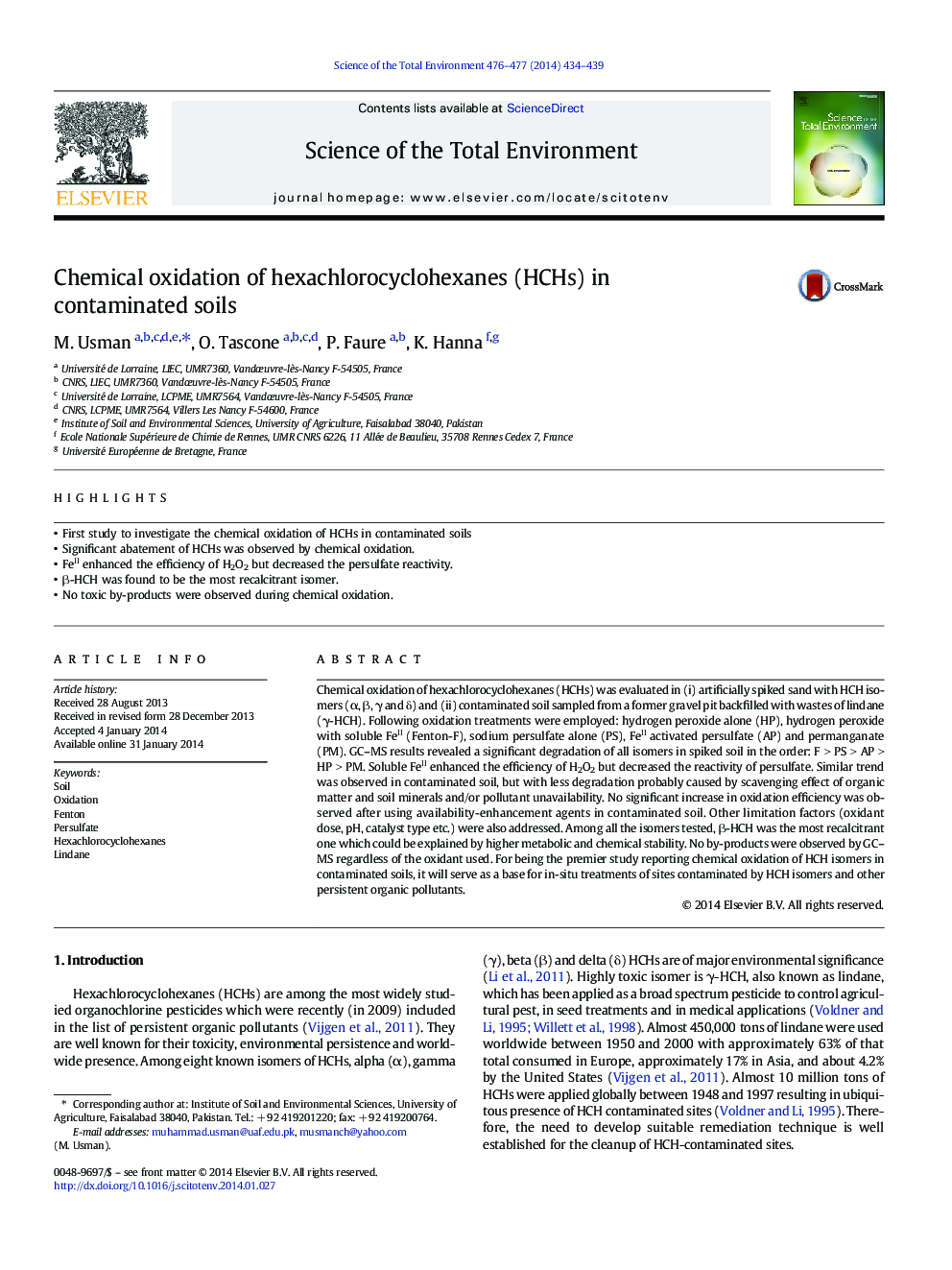| کد مقاله | کد نشریه | سال انتشار | مقاله انگلیسی | نسخه تمام متن |
|---|---|---|---|---|
| 4428558 | 1619789 | 2014 | 6 صفحه PDF | دانلود رایگان |

• First study to investigate the chemical oxidation of HCHs in contaminated soils
• Significant abatement of HCHs was observed by chemical oxidation.
• FeII enhanced the efficiency of H2O2 but decreased the persulfate reactivity.
• β-HCH was found to be the most recalcitrant isomer.
• No toxic by-products were observed during chemical oxidation.
Chemical oxidation of hexachlorocyclohexanes (HCHs) was evaluated in (i) artificially spiked sand with HCH isomers (α, β, γ and δ) and (ii) contaminated soil sampled from a former gravel pit backfilled with wastes of lindane (γ-HCH). Following oxidation treatments were employed: hydrogen peroxide alone (HP), hydrogen peroxide with soluble FeII (Fenton-F), sodium persulfate alone (PS), FeII activated persulfate (AP) and permanganate (PM). GC–MS results revealed a significant degradation of all isomers in spiked soil in the order: F > PS > AP > HP > PM. Soluble FeII enhanced the efficiency of H2O2 but decreased the reactivity of persulfate. Similar trend was observed in contaminated soil, but with less degradation probably caused by scavenging effect of organic matter and soil minerals and/or pollutant unavailability. No significant increase in oxidation efficiency was observed after using availability-enhancement agents in contaminated soil. Other limitation factors (oxidant dose, pH, catalyst type etc.) were also addressed. Among all the isomers tested, β-HCH was the most recalcitrant one which could be explained by higher metabolic and chemical stability. No by-products were observed by GC–MS regardless of the oxidant used. For being the premier study reporting chemical oxidation of HCH isomers in contaminated soils, it will serve as a base for in-situ treatments of sites contaminated by HCH isomers and other persistent organic pollutants.
Journal: Science of The Total Environment - Volumes 476–477, 1 April 2014, Pages 434–439